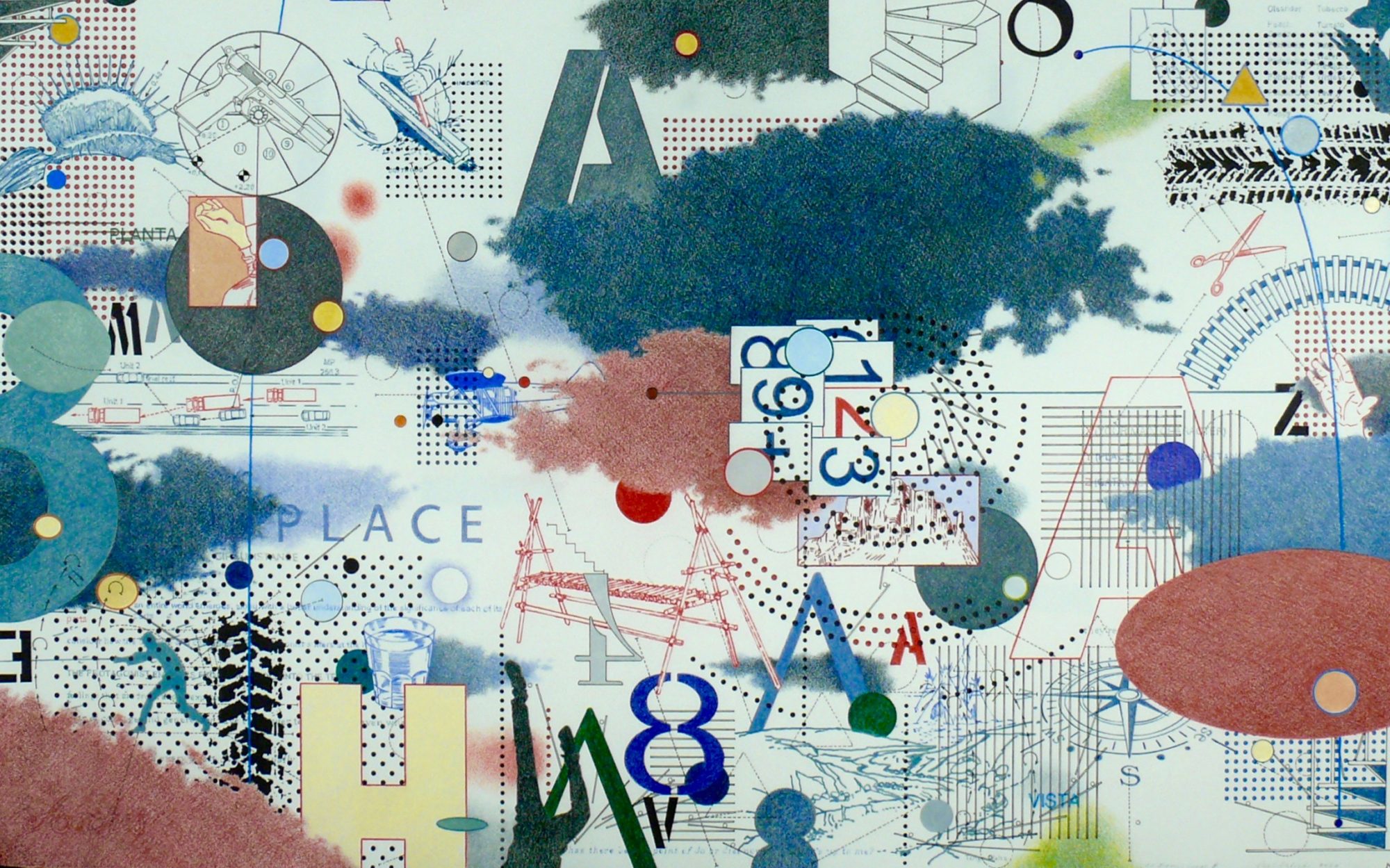About the Drawing Series:
“10 SCENES” (2018-2020)
Instructional books on the use of words to express emotion, create characters, arrange scenes, form narratives, and construct plots served as the catalyst for this series. The techniques and process outlined in these books were often contradictory and highly subjective – offering specific methods shaped by the author’s personal aesthetics, idiosyncrasies and preferences. The texts offered strategies of shaping of imagery, selection of props, character motivation, hierarchy of details to convey time period and location, and narrative devices to convey tension and suspense, as well as internal and external dialogue. These texts attempted to offer practical guidance in applying language for a specific purpose and form, engaging the reader to shape images, sounds, colors, textures, and attention to specific details of time and place. Glabicki saw parallels to other narrative, temporal and sequential forms, from cinema and music, to composition of word and image, signs and signifiers that has been central to his own work in film, video, painting, and drawing. The “10 SCENES” series compose complex collages of word and image that suggest fragments of narratives in the process of forming. Each piece suggests themes such as travel, calamity, romance, mystery, or conflict through specific props, words, color, or detail. Text fragments from the writer’s instructional books, offering possible motives for selection of visual data, are layered within the compositions. The works are often cinematic, employing focus, references to techniques of storyboards, editing and montage. Like Glabicki’s other works that played with the thresholds between abstract and figurative form, “10 SCENES” explores components of narrative as fractured data and specific signifiers existing in an abstract space – a space (much like a book or painting) formed in the mind of a reader or viewer in response to information provided by the writer/visual artist.
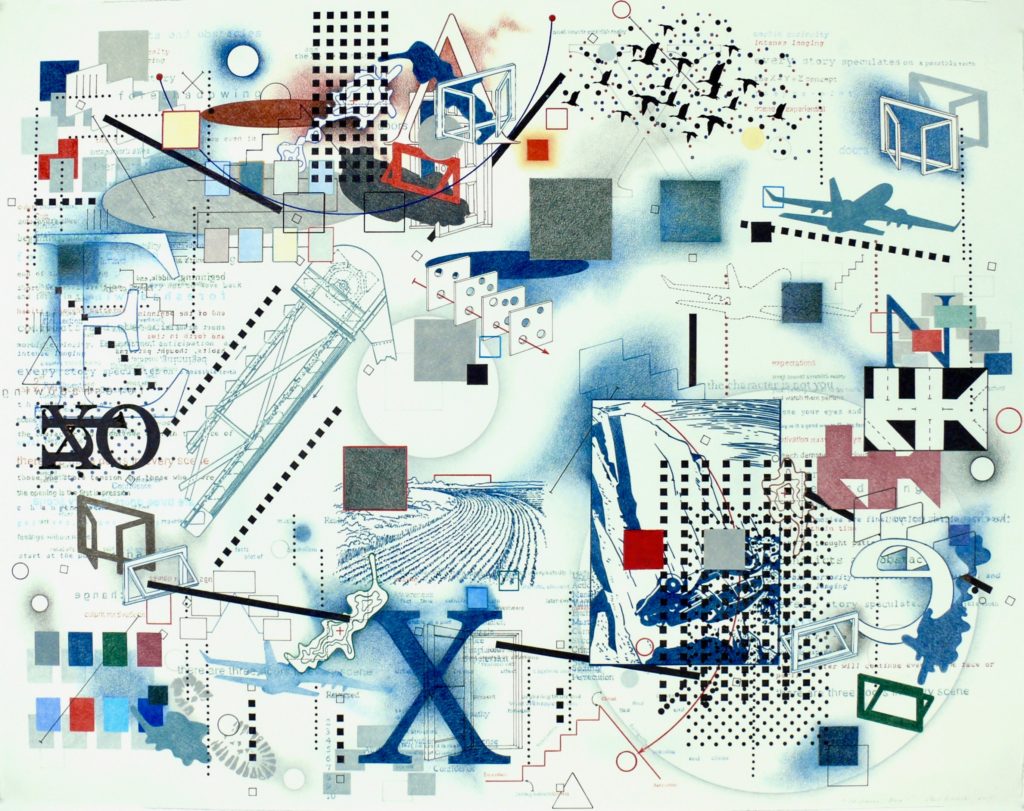
10 Scenes: Scene 1 (2018)
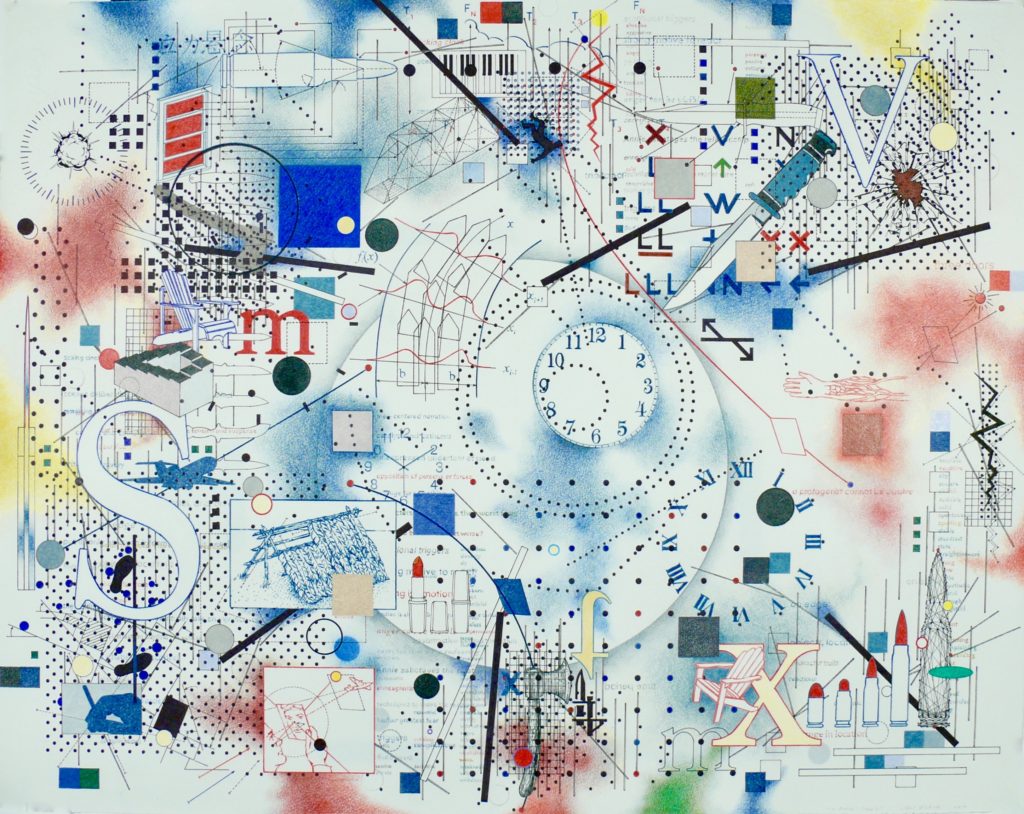
10 Scenes: Scene 2 (2019)
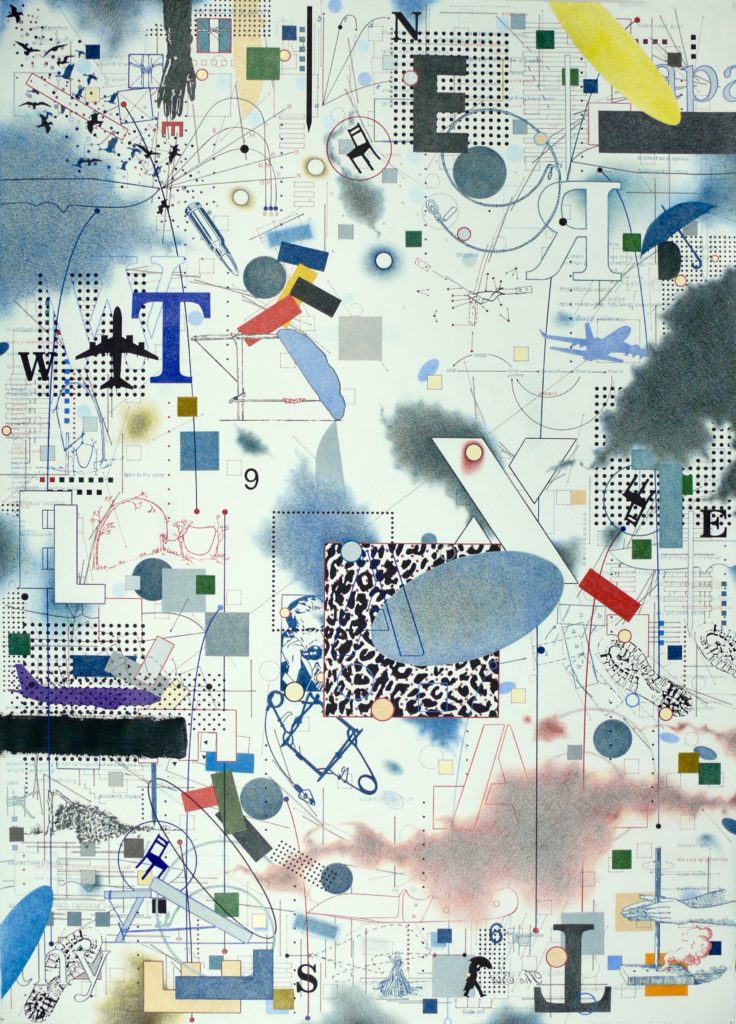
10 Scenes: Scene 3 (2019)
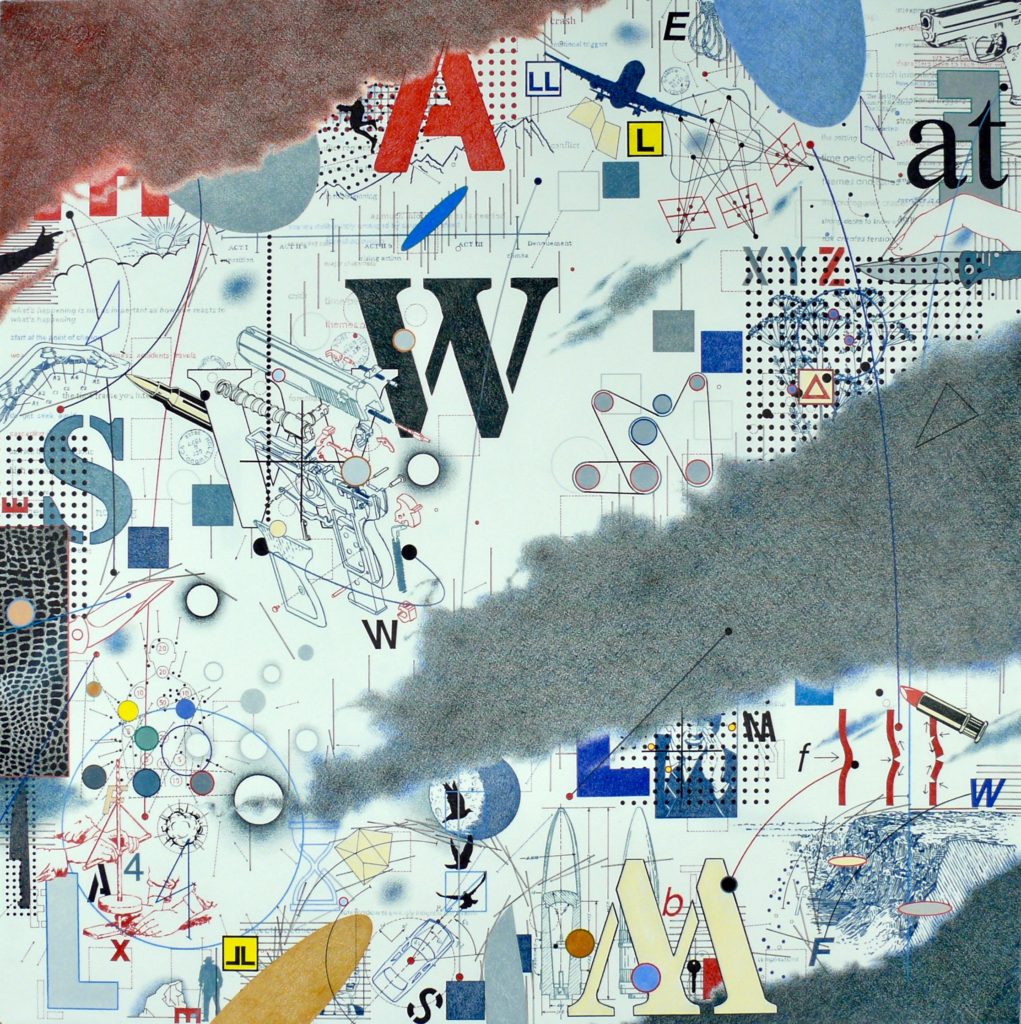
10 Scenes: Scene 4 (2019)
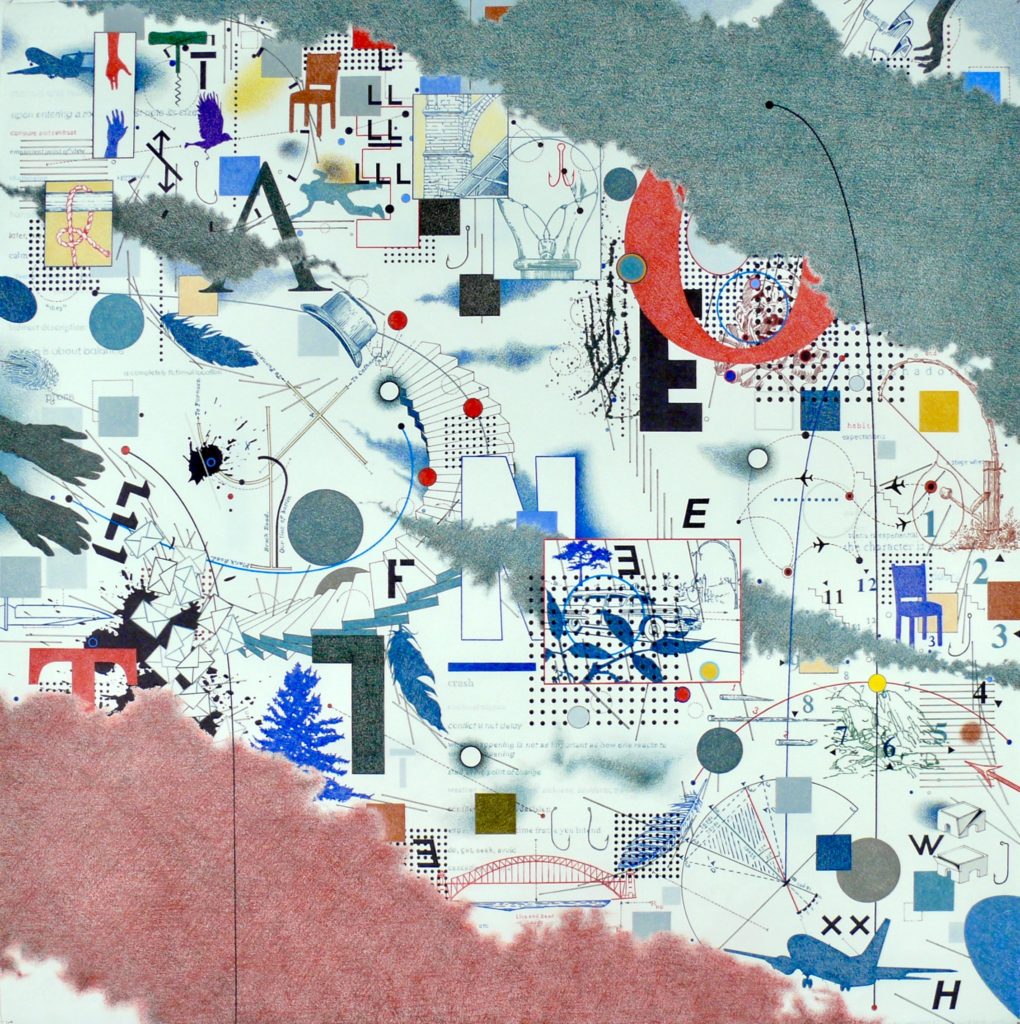
10 Scenes: Scene 5 (2019)
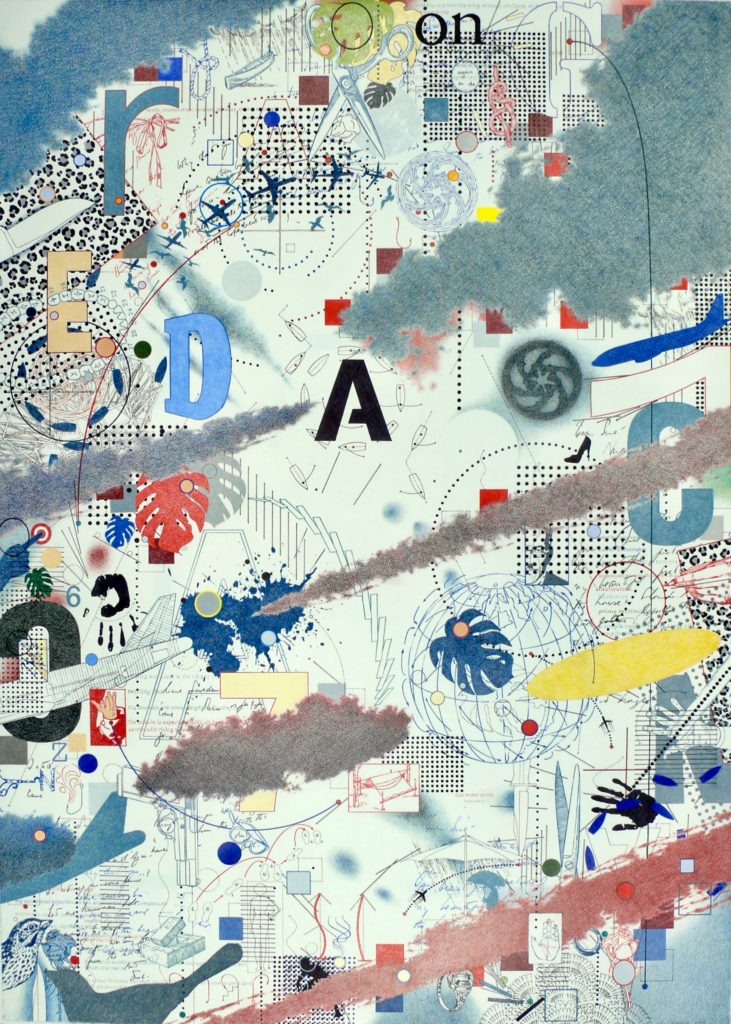
10 Scenes: Scene 6 (2019)

10 Scenes: Scene 7 (2019)
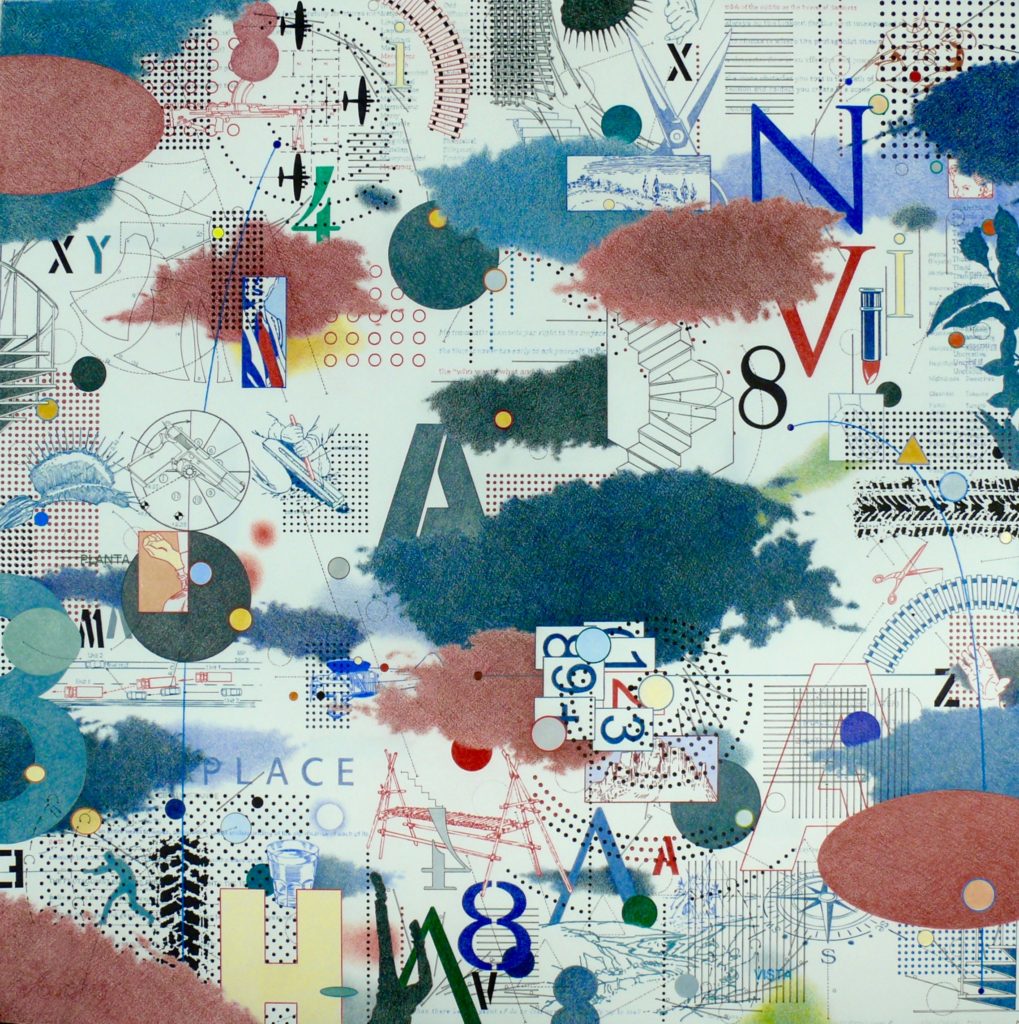
10 Scenes: Scene 8 (2020)
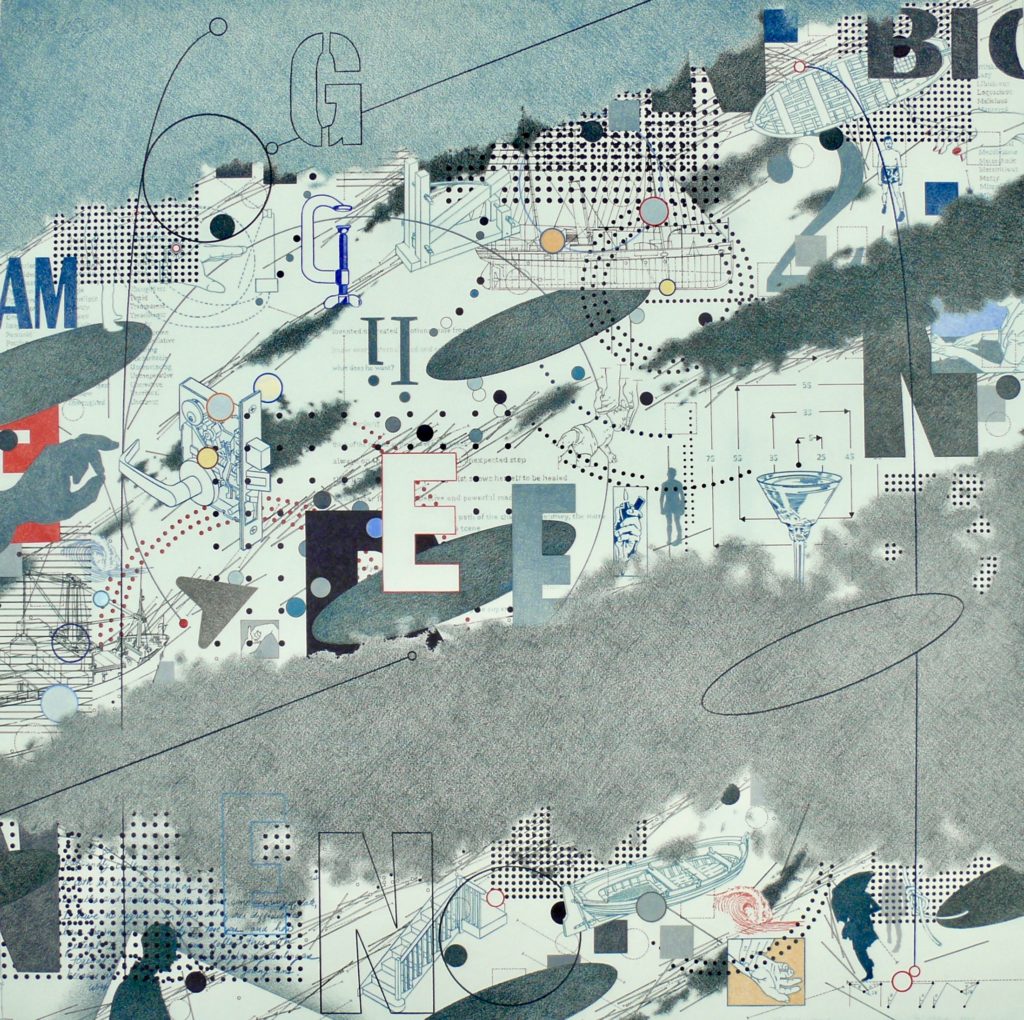
10 Scenes: Scene 9 (2020)
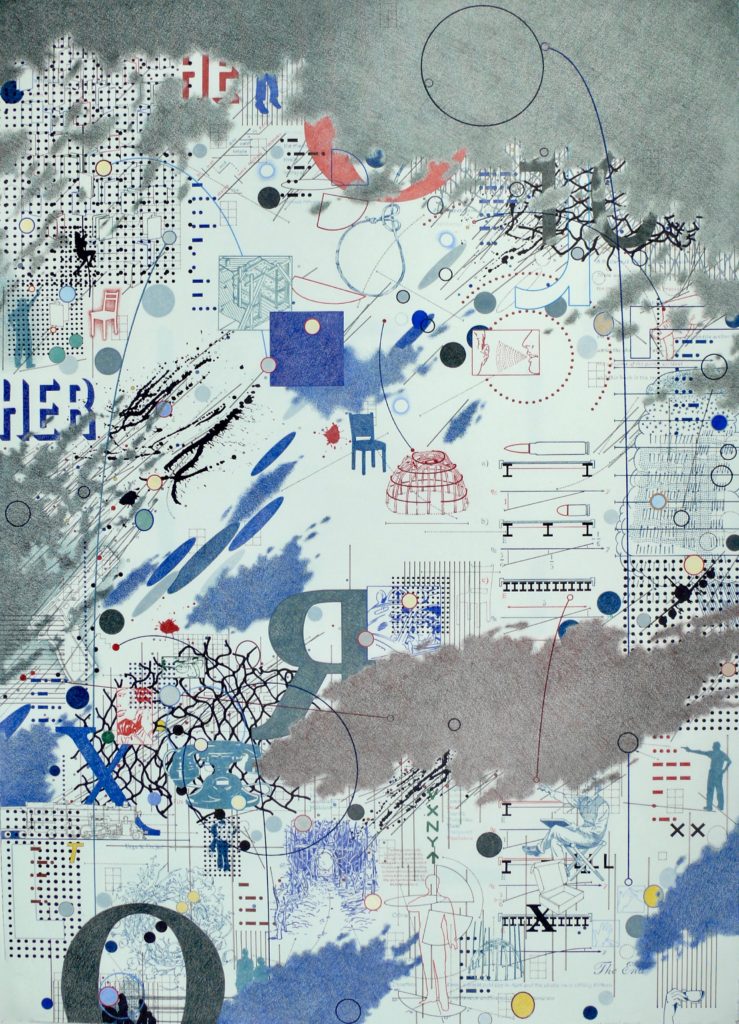
10 Scenes: Scene 10 (2020)
“THREE ROOMS” (2020)
Fractured architectural spaces provide a framework and context for a collection of disquieting and colliding signs, symbols, and image fragments. Each drawing offers a “house” in the process of construction and collapse, inhabited by characters/shadows, domestic objects, and assorted props. Each space attempts to imply a sense of threat, tension, narrative and paranoia within a confined, imploding and exploding space, responding to forces from within and without.

Three Rooms: Room 1 (2020)
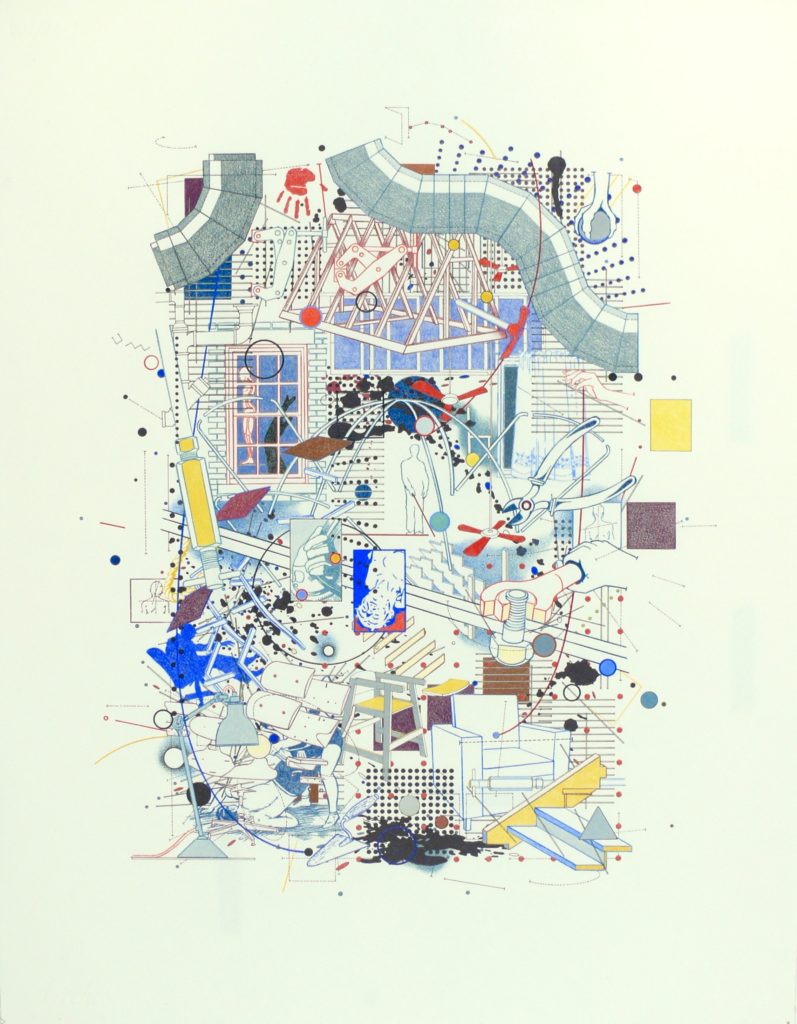
Three Rooms: Room 2 (2020)
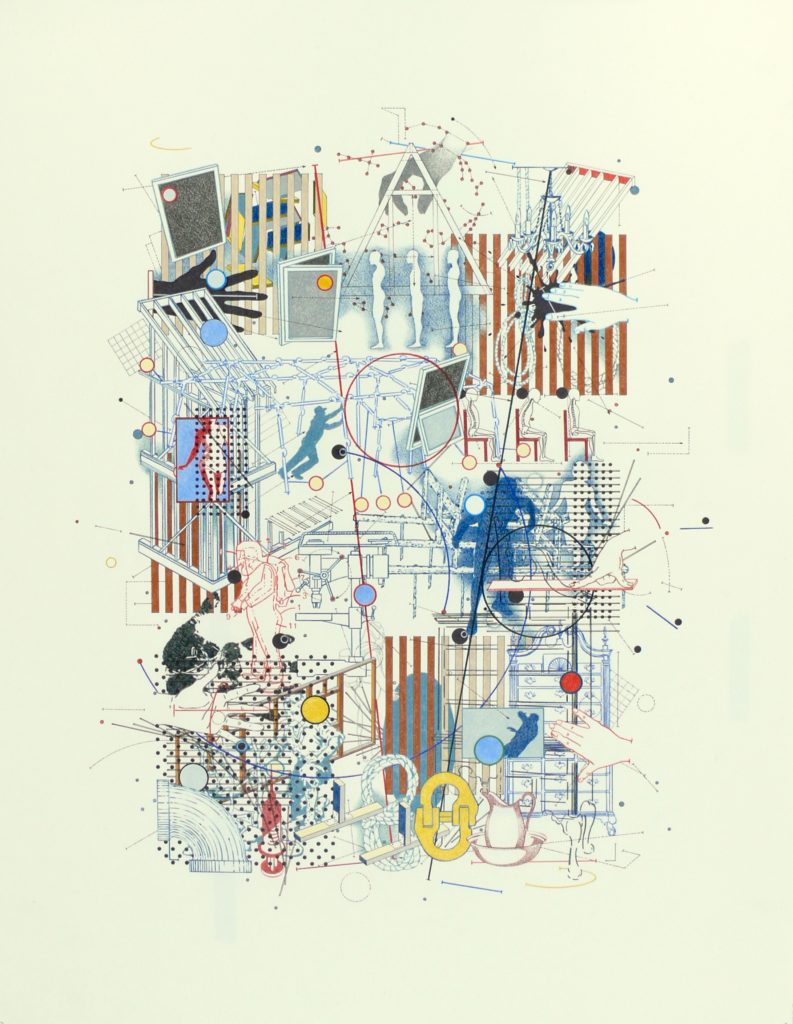
Three Rooms: Room 3 (2020)
“SCIENCE FICTION” (2021)
This series of 6 drawings (14” H X 12 ¾” W) overlays multiple sources and references to science and science fiction fantasy – from inventions of Nikola Tesla and modern robotics, to technology real and imagined, imagery and data of the past and present. The juxtapositions and layering of data are intended to suggest ambivalence and anxiety in a time when fact and fiction seem to be continually in question, lacking reason, and foreshadowing an ominous future filled with doubt.
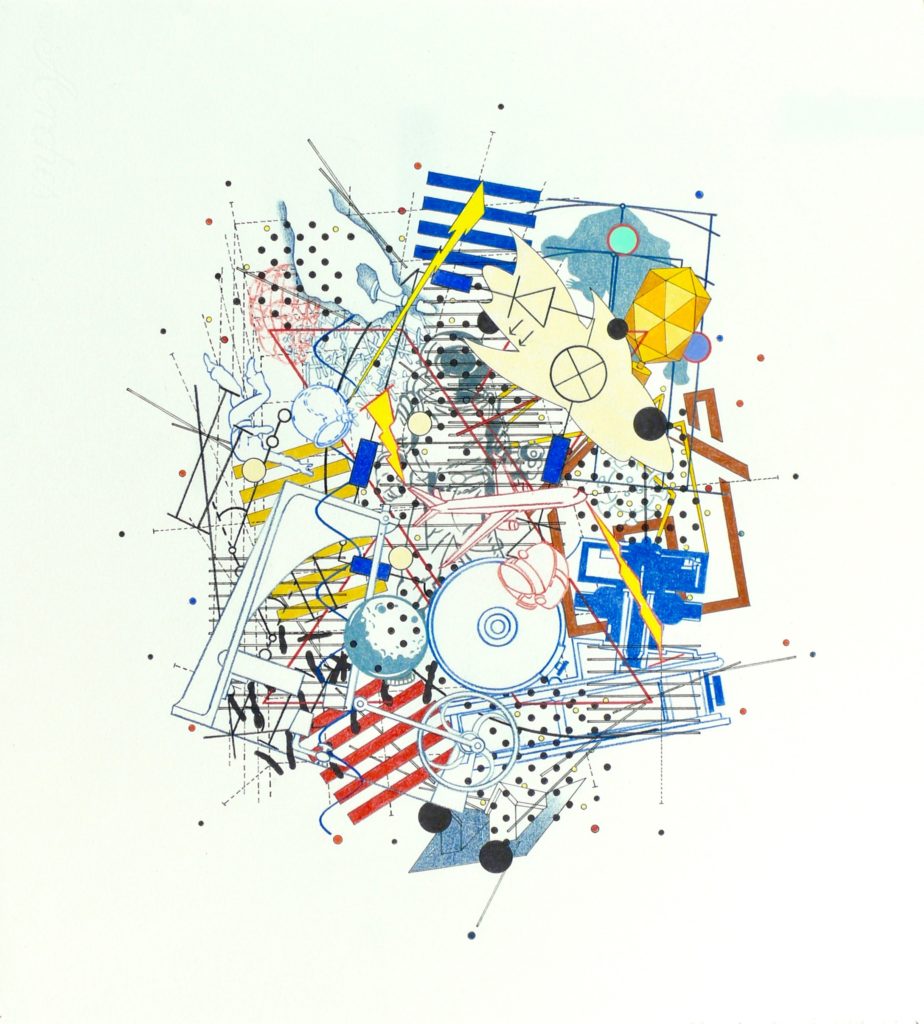
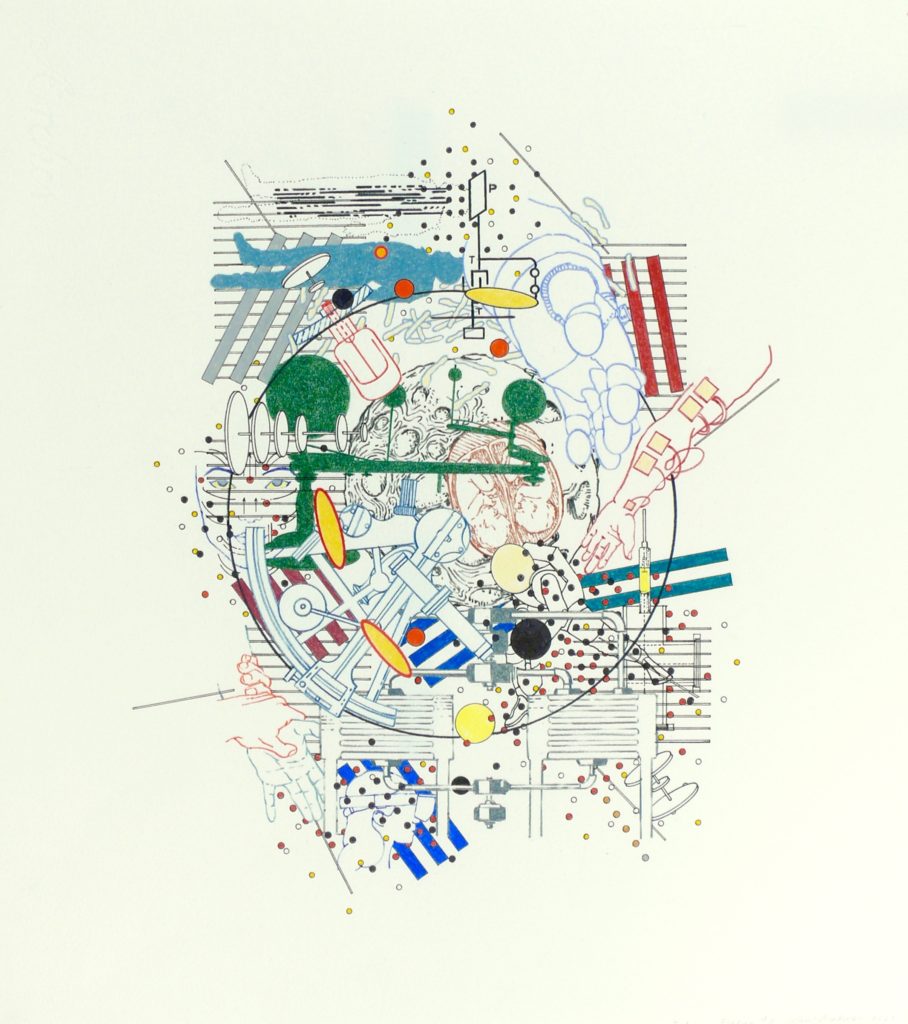
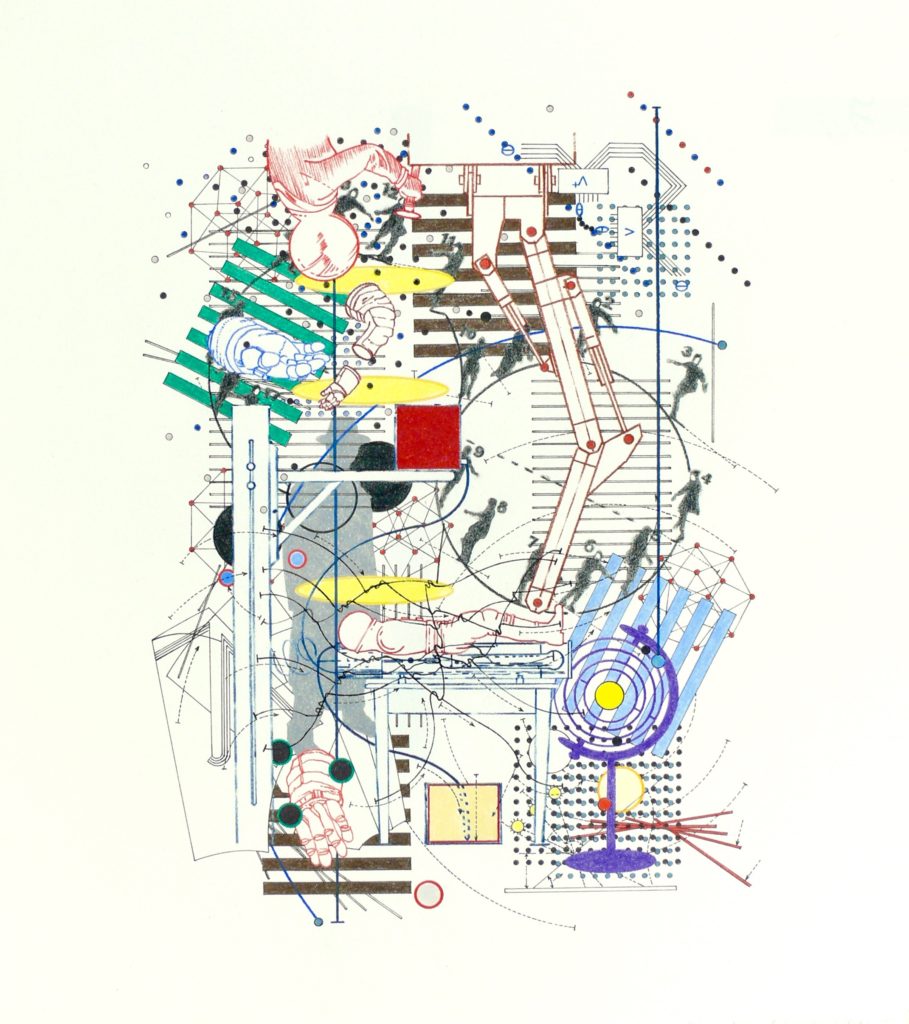
Science Fiction #3 (2021)
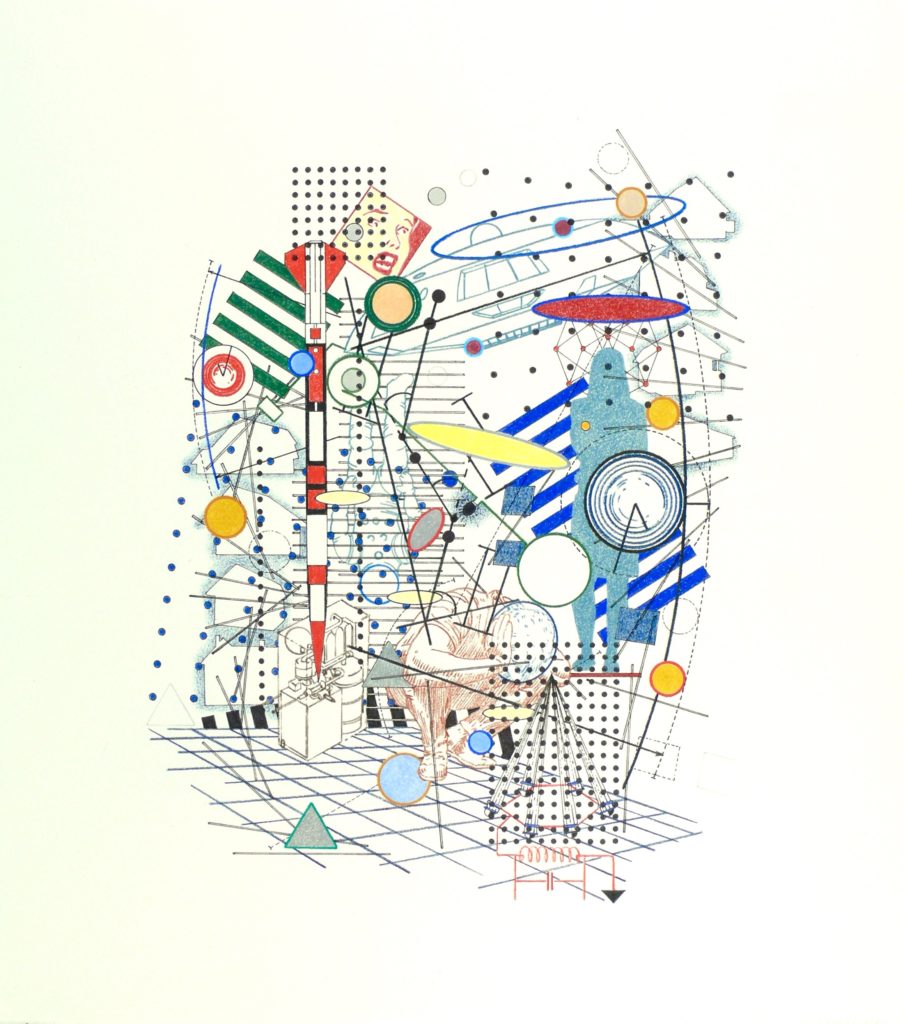
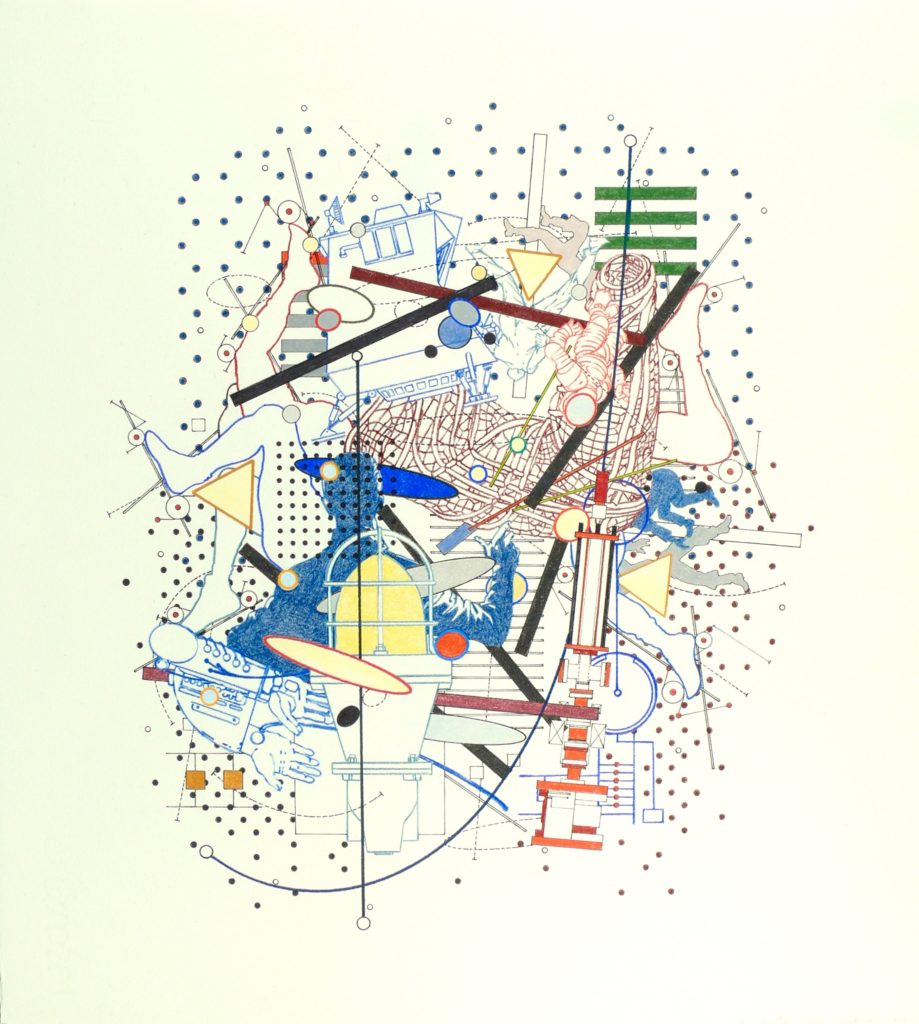
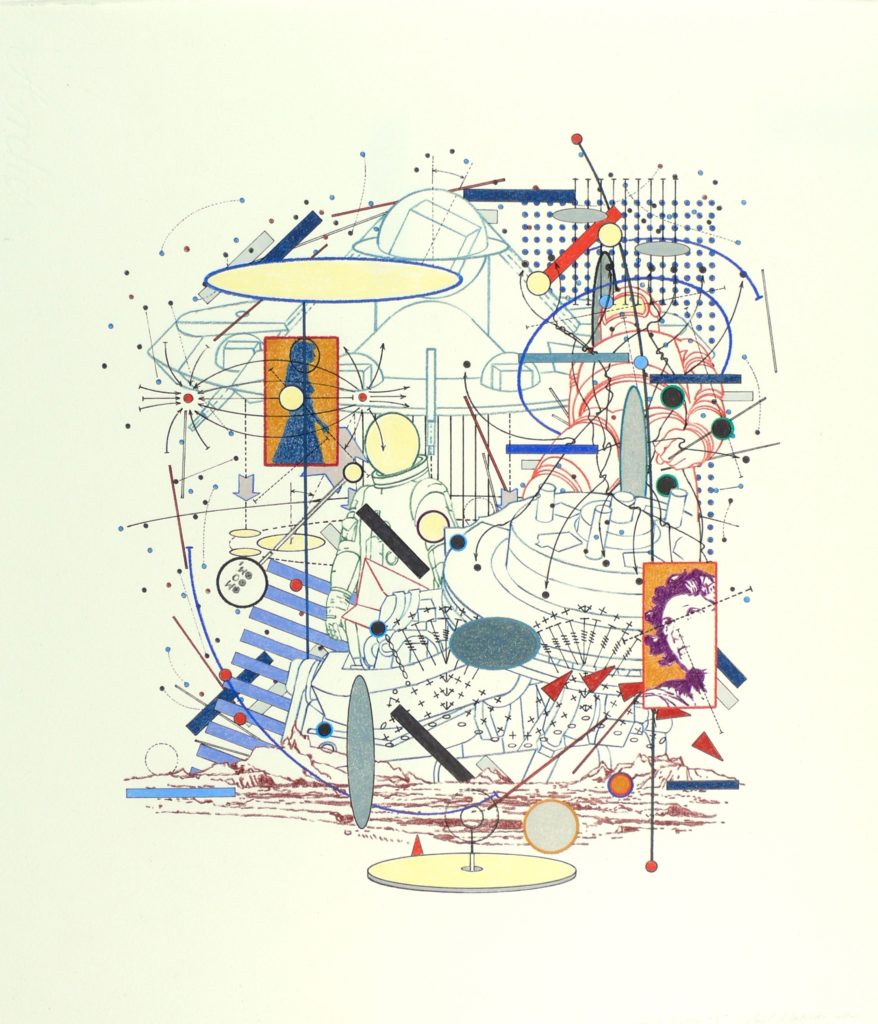
“CONSTELLATIONS” (2021 – 2022)
Astronomical representation of the constellations offers a complex two-dimensional representation of perceived relationships of points in space that serve as a map, a recorded pattern, or a grouping/configuration reflecting or expressing cultural history, beliefs, objects, or imaginary associations.
In this series, multi-layered depictions of actual celestial maps are overlaid with new data, information, signs and symbols, relationships, and transformations. In this space, constellations reflect past and present, juxtapose fact and fiction, and reconfigure a cosmos of shifting scale, meaning, and visual data to be decoded, read, or discovered by the viewer.
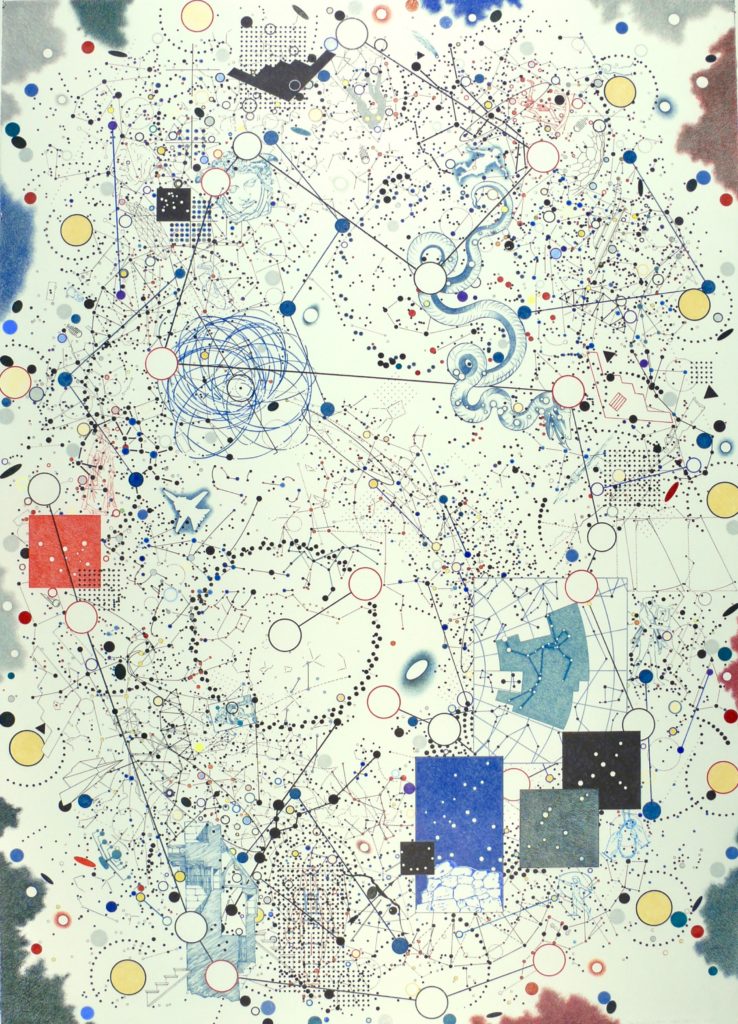
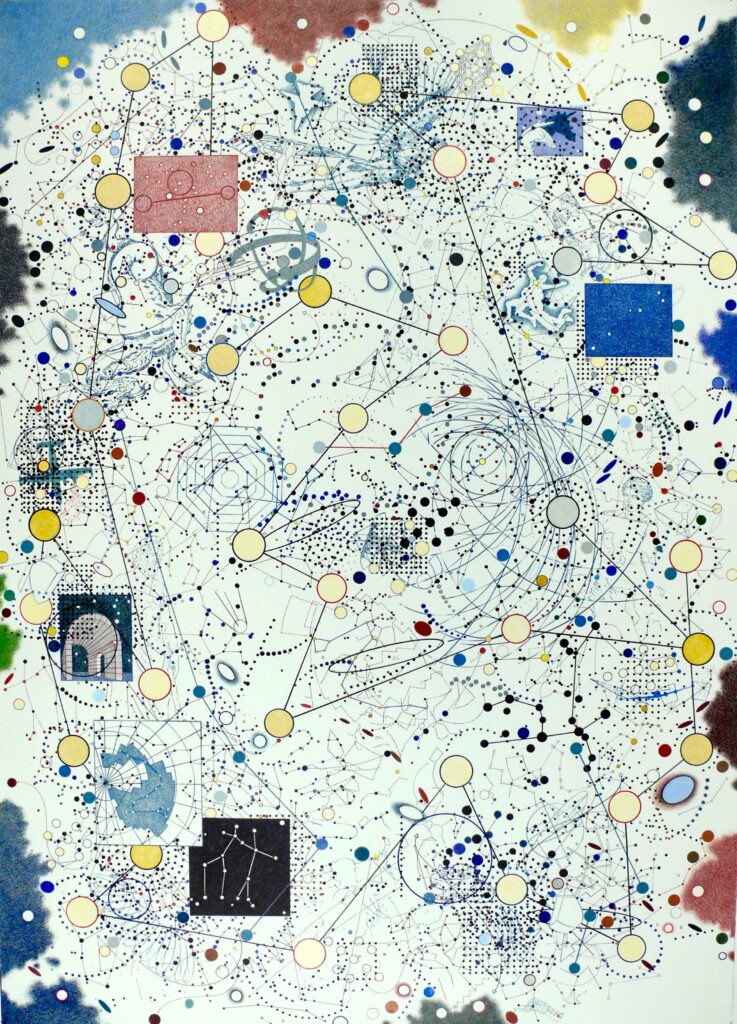
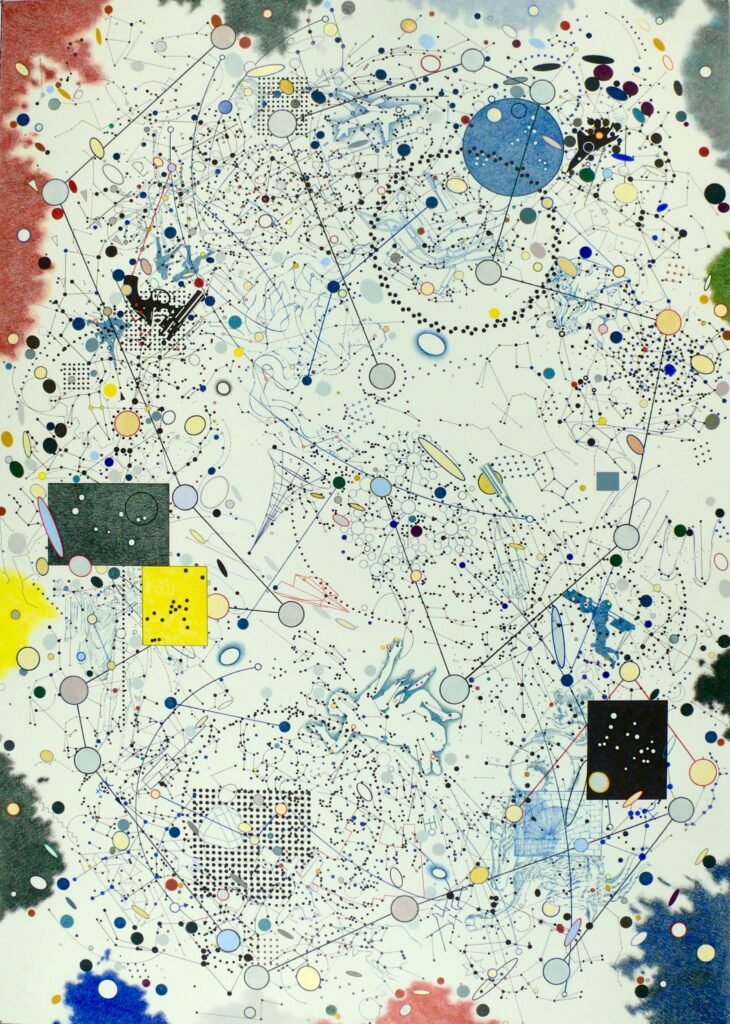
“ALTERED STATES” (2022 – 2023 )
The compositions of the ALTERED STATES series are shaped by interacting forces that constantly modify, transform, and reconfigure form and spatial relationships. Order and entropy are constantly at work. Constructed in a series of layers, starting with an ordered rotation of foreground elements. Each successive layer introduces a new method of configuration, often contrasting with initial layers. A new layer may return to the order/method of an earlier positioning method, while the next offers new options. Each layer offers its own set of contrasts (soft/hard edges, shifts of focus, emphasis on figurative or abstract content) or responses to earlier compositional form, color, or visual data. The complex interactions imply a sense of motion, shifting forces of weight and balance, and a fragile state of stability and resistance to the process and set of decisions imposed by the artist.
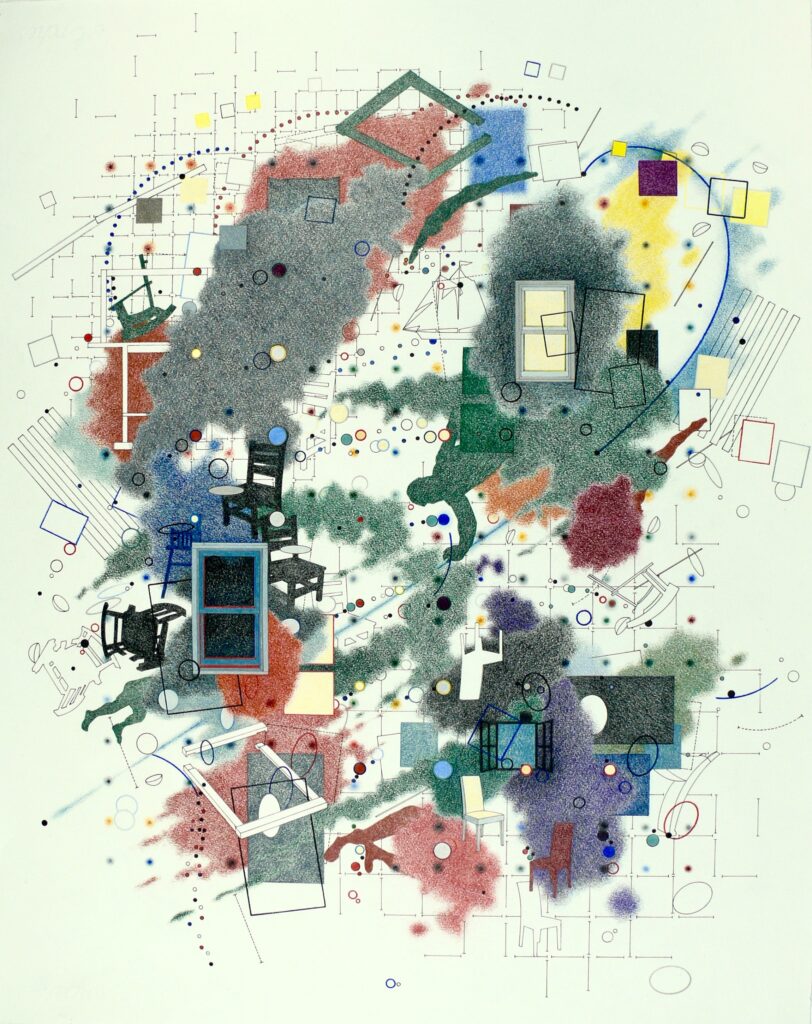
ALTERED STATES #1 (2022)
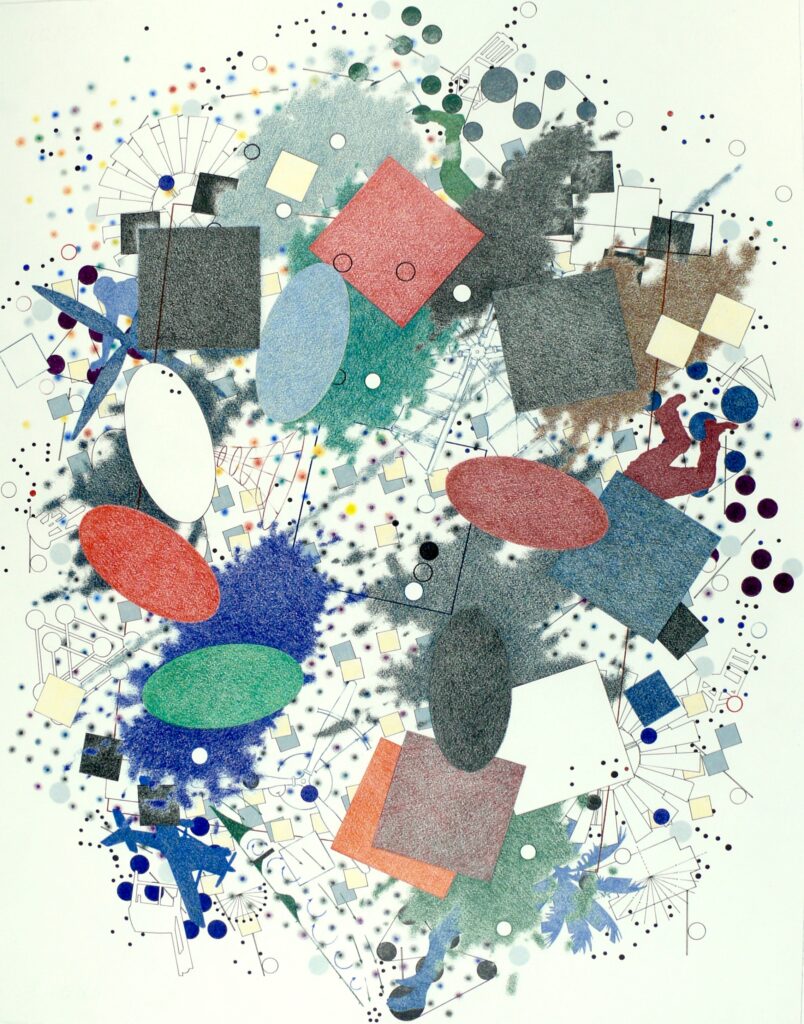
ALTERED STATES #2 (2022)
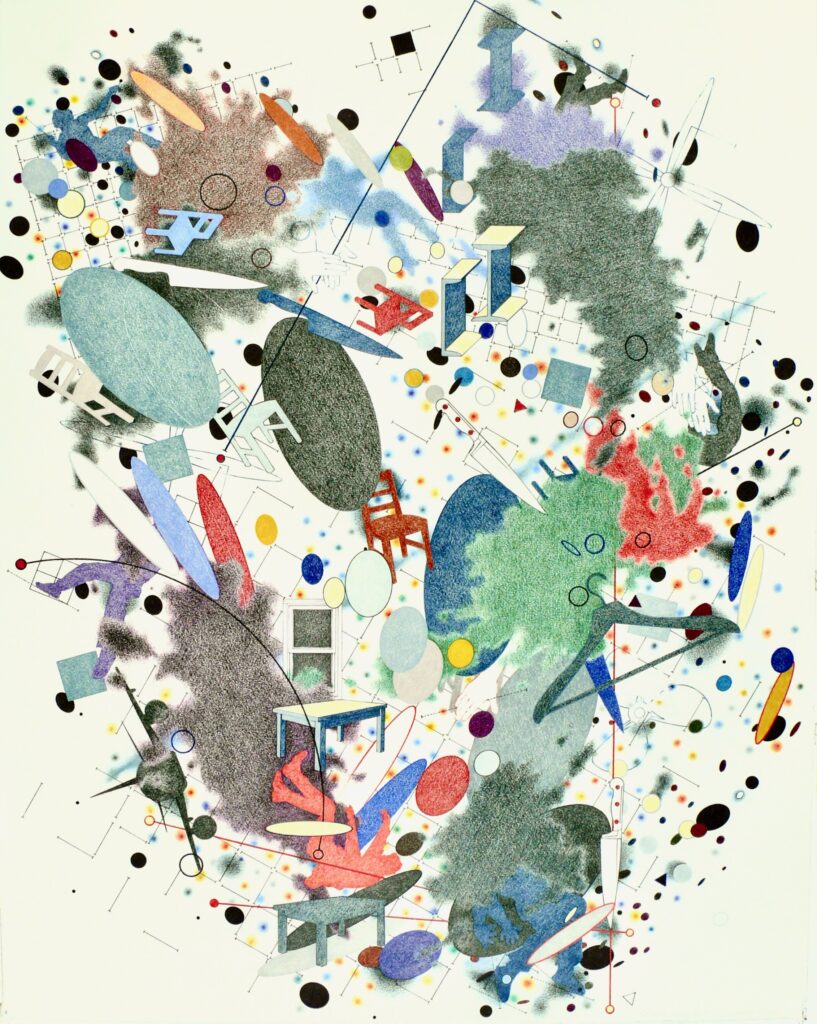
ALTERED STATES #3 (2023)
“GRAMMAR” (2023-2024)
The GRAMMAR series borrows elements of a variety of grammars: art, design, language, signs and symbols, color, redaction, narrative, figurative and abstract data, and more, combining or contrasting their form to offer alternative organization of data, compositional experiments, and thematic interpretations. The compositions play with the ambiguity and complexity of language and the equally complex relationships of diverse visual data placed into new configurations. Each drawing is the result of a unique set of choices, juxtapositions, and drawing process – each determined by fragments or structures of selected systems or genre of grammar.
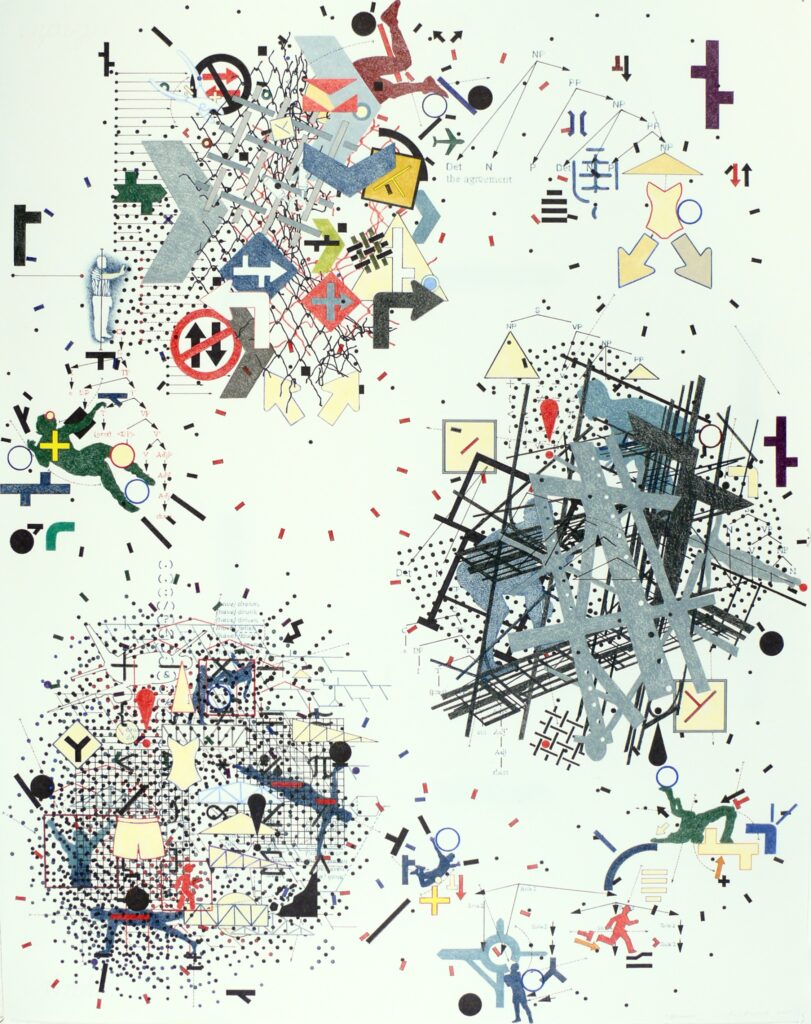
GRAMMAR #1 (2023)
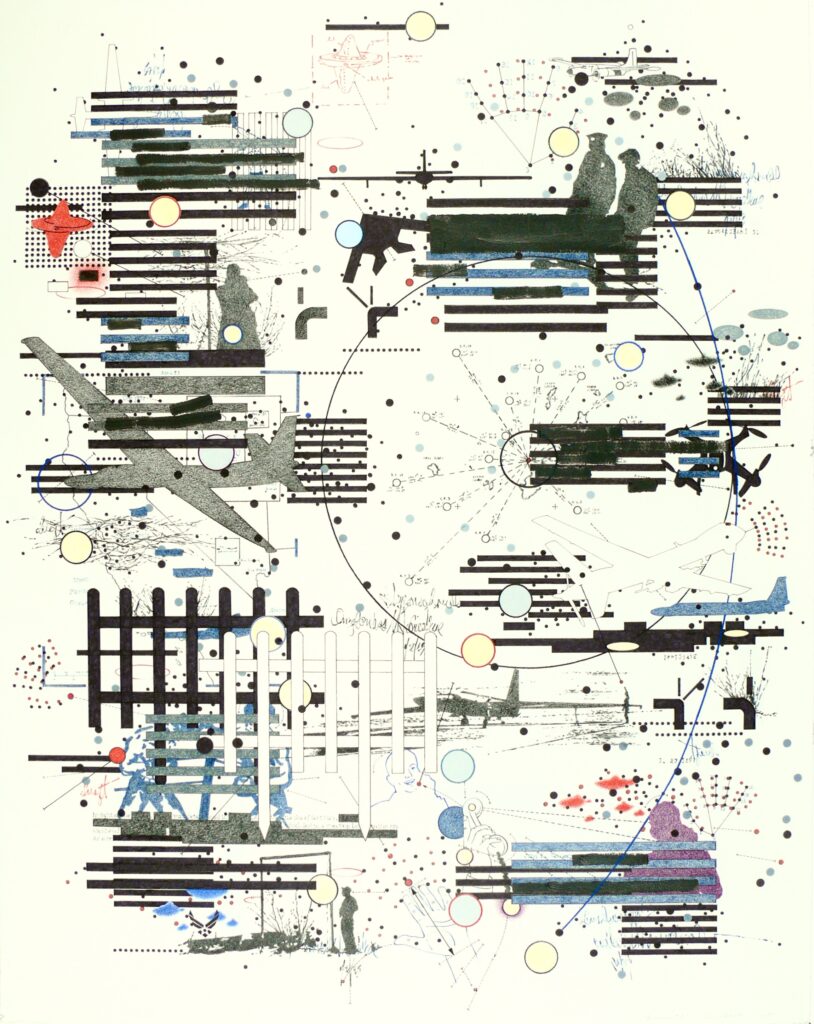
GRAMMAR #2 (2024)
